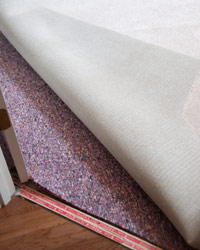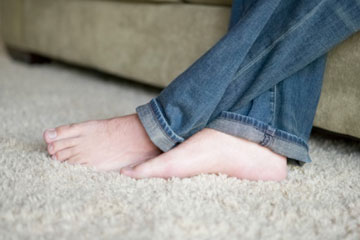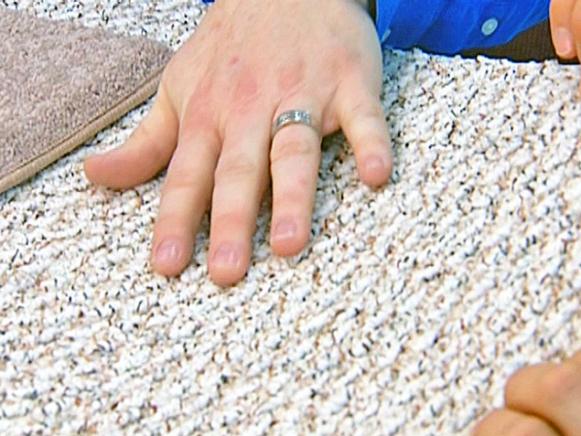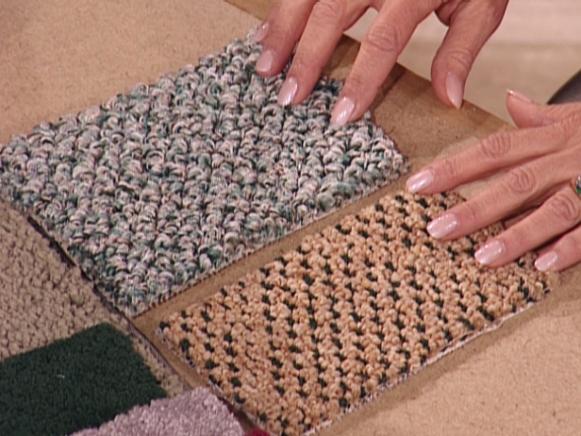The Do’s and Don’ts of Choosing a Carpet
Buying new carpet can feel overwhelming because there are so many choices and decisions to be made. Taking your time, doing the proper research, and finding the right retailer will make the job manageable and enable you to select a carpet you’ll be happy to live with for years to come.
Understanding Fibers and Warranties
Do learn about the fiber types and figure out which one would work best for you. Not all carpet fibers are created equal; for example, there are natural fibers, such as wool, and synthetic fibers, which are more commonly used in wall-to-wall carpet. Understand the characteristics of each fiber type so that when you go shopping, you can almost immediately narrow down your selection.
Determining Quality
Do learn how to tell the quality of a carpet. You don’t have to become an expert on the subject, but if you have an overall sense of the various factors that contribute to a carpet’s quality and how well it will perform, then you can avoid choosing the wrong carpet.
Finding a Retailer
Do shop around and find a retailer you are comfortable with. Many people feel vulnerable when shopping for carpeting because the quality of the carpet isn’t always immediately apparent, so customers often have to trust the salesperson. Make sure that you deal with a salesperson you feel you can trust, at a store where you can expect to have a positive experience. To be sure your retailer and salesperson are right for you
Deciding What You Like With Confidence
Do decide on a style that works for you. While there are hundreds of carpets available, they can all be narrowed down into one of only a few style categories. Learn about the benefits and drawbacks of each carpet style, so that you’ll know whether it will work in your home

Tips for Choosing Carpet
Nothing compares to the soft, luxurious feeling of carpet under your feet. Carpeting provides a safe, comfortable spot for kids to play and may even reduce the risk of injury during a fall [source: Carpet and Rug Institute]. Sure, carpet requires a bit of extra maintenance compared to vinyl or tile, but there’s simply no substitute in terms of sound absorption, warmth and overall comfort.
With so many different colors, materials and designs available, it can be difficult to choose the best carpet for your home. Some materials may require frequent cleanings that simply won’t fit into your busy schedule, others come with a high price tag and some may even have an effect on your health. The wrong carpet may wear out quickly, fade or show stains that stubbornly resist your best cleaning efforts. Protect your investment and choose the best carpeting for your home with these 10 carpet-buying tips
Don’t be tempted to skimp on carpet padding to save a few dollars. Just as a building needs a solid foundation, carpeting relies on a layer of padding for support, strength and a bit of extra cushioning. You can’t see the padding, but you’ll definitely spot the extra wear and tear on your new carpet if you pick an inadequate padding material
Made from rubber or foam materials, carpet padding conceals subfloor imperfections to improve the appearance of the finished floor. It also acts as insulation to help control the temperature of your home, and it even absorbs sound to protect your privacy and eliminate neighbor noise. Most importantly, padding supports your carpet through years of use, since it prevents carpet backing and fibers from coming apart over time
Carpet comes in many styles, including plush, Saxony, Berber, textured and frieze. These terms apply to its pile, which is the surface you see, created from yarn tufts that are either folded over into loops, cut straight across or both. While each style has a distinctive look, that shouldn’t be your main consideration. Instead, look at how well your lifestyle meshes with a particular carpet style. Plush carpeting, for example, is made from tightly twisted pile, and is thick, soft and inviting. But it also shows footprints and vacuum tracks, and can develop something called “pooling,” or areas that appear shaded because the normal direction of the carpet fibers has been reversed. Saxony, the most common type of carpeting, is similar to plush [source: Becker]. These carpet styles work best in low-traffic areas like formal living rooms and master bedrooms.

How to Select the Perfect Carpet
Though numerous carpet options are available, there are basically only two styles of carpet — loop pile and cut pile. In the loop-style pile each of the ends is connected into the backing so there’s a continuous loop. If you actually ran a pin underneath, you would feel the loop.
In the cut-style pile, the loops are actually cut so that there are individual ends sticking up through the backing. If you ran the same pin through there the pin would lift right up. It is like a sheer cut pile.
Cut pile carpet can go throughout the house. It is comfortable underfoot and makes for a very attractive floor. Loop pile styles are used in heavy traffic areas. Areas where children are or where there is a lot of activity. It will perform and last for a long time
When it comes to easy-to-clean carpet, olefin is a product that is naturally stain resistant. It will take most household food stains and you will be able to clean it. Polyester is naturally stain resistant because it doesn’t accept those kinds of dyes either. It is a critical product in applications where staining will be an issue. Nylon is treated for stain resistance — there is an over treatment that you put in that will allow you to take stains out. Wool takes more care and cleaning to get stains out.
A few key questions can help a carpet salesperson help you find the best choice for your needs:
1. What type of room will the carpet be used in — formal or informal, high- or low-traffic?
2. What do you expect of carpeting for this space?
3. How do you want the carpet to feel underfoot?
4. What’s your carpeting budget?
5. How much effort do you want to put into maintaining your carpet?

How to Choose Carpet
Carpet Overview: Compare carpeting options before making the investment
Shopping for carpet is a lot like shopping for a car. It involves a huge financial investment; all the different types of carpet, styles, colors and brands can make your head spin; and you often end up dealing with high-pressure salespeople. The experience can be so overwhelming that it’s tempting to shop with only a basic color and style in mind and rely on salespeople for recommendations.
Carpeting is one of the largest investments you’ll make in your home. By doing some basic homework, comparison shopping and working with a reputable retailer, you’ll be able to understand the types of carpet that will work best for your home and buy carpeting that fits your needs—and gives you confidence that you’re getting a quality product for a good price.
Types of carpet: Choose carpet fiber that best fits your needs
Nylon outperforms all other fibers in durability, resilience and easy maintenance. This is a good choice if you want your carpet to last a decade or longer, for high-traffic areas, and in homes with kids and pets (Photo 1). Higher quality nylon fibers are “branded,” and the carpet label will use terms like “100% Mohawk Nylon” or “100% Stainmaster Tactesse.” Lower-quality, “unbranded” nylon fibers are listed simply as “100% nylon.” The strongest and softest type (and most expensive) is 6.6 nylon. Nylon carpet cost is $10 to $45 per sq. yd
Triexta (brands include Smart-Strand and Sorona) is a newly classified fiber derived partly from corn sugar (Photo 2). It has excellent, permanent anti-stain properties (nylon must be treated with stain protectors over its life span). It also has good resilience, but it’s too soon to tell whether it will match the durability of nylon in high-traffic areas. Because of its superior stain resistance, this is a good choice if you have young kids or pets. Triexta carpet cost is $20 to $45 per sq. yd.
Polyester (also called PET) is stain resistant, very soft and luxurious underfoot, and is available in deep and vibrant colors (Photo 3). However it’s harder to clean, tends to shed and isn’t as durable as nylon. It’s best used in low-traffic areas (like bedrooms) and in households without kids or pets. A nice, cushy choice if you like to exercise on the carpet. Polyester carpet cost is $8 to $18 per sq. yd.

tips for choosing carpet
A good-quality carpet takes a floor from workable to homely. It instantly transforms a space, softening the look of a room and absorbing noise to create a cosy environment. But choosing the best carpet for your home can be somewhat of a minefield, from pile types to colours – the options are seemingly endless.
CONSIDER THE WAY YOU LIVE
If you have a young family and pets then look for a hard-wearing carpet in a forgiving colour, such as a textured loop pile or a quality hard-twist cut. If you’re a couple looking for a touch of luxury, you might opt for a plush pile in a flat colour. If you’re an entertainer, a combination cut and loop pile in mid-to-dark tones or a stippled cut pile would suit.
THINK ABOUT PLUSH PILES
Cut piles include plush piles, which are super soft and look like velvet. If you want that squishy, luxurious feeling then dense, plush-pile carpets are lovely, but bear in mind they show footprints
TAKE A LOOK AT LOOP PILES
Loop piles are exactly that; the yarn is formed into loops. There are lots of variations: some have a formal, linear look, some have a ribbed pattern, giving them a sisal look. Random loop piles give the carpet a textured, casual look.
MIX IT UP
Combination cut and loop pile carpets, where the contrasting textures create a light and dark pattern are less likely to show footprints and have a lovely texture underfoot